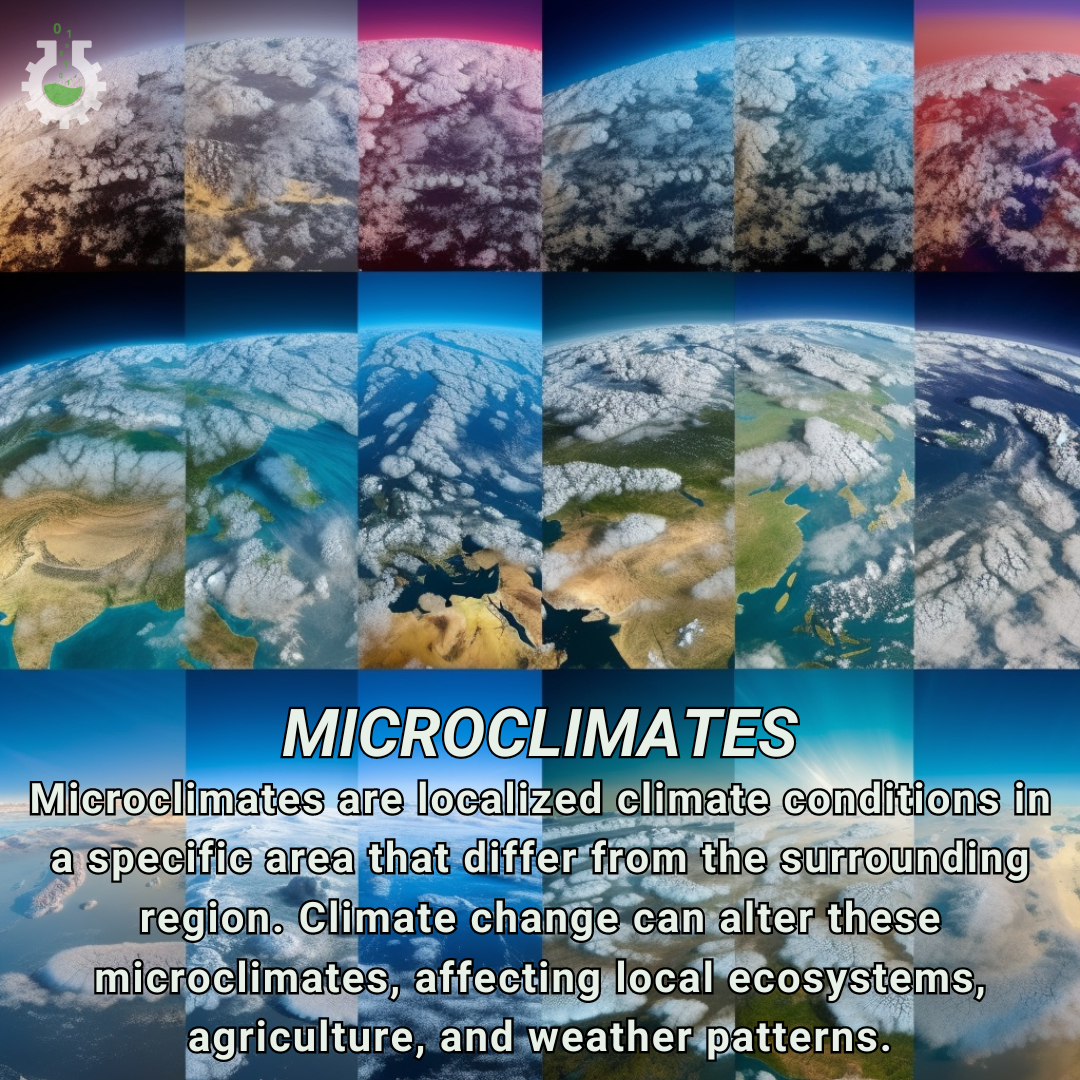June 18, 2024
Climate Change Poster Collection of the Day – Microclimates
Book a Demo
Today’s Climate Change Poster Collection highlights Microclimates, the localized climate conditions that differ significantly from the surrounding areas, are a fascinating yet often overlooked aspect of climate science. These small-scale climate zones can range from the micro level of a garden or a single building to larger areas like a city block or a forested region. They are influenced by a variety of factors such as topography, vegetation, water bodies, and human activities. With the advent of climate change, the dynamics of microclimates are undergoing significant transformations, which in turn affect both natural ecosystems and human settlements in profound ways.
One of the most well-known examples of microclimates is the urban heat island effect. Urban areas, characterized by concrete structures, asphalt, and minimal vegetation, often experience higher temperatures than their rural counterparts. This is primarily due to the heat-absorbing properties of buildings and roads, as well as the lack of cooling vegetation. As global temperatures rise, these urban heat islands become more pronounced, exacerbating heatwaves and increasing energy demands for air conditioning. This not only puts a strain on the power grid but also contributes to higher greenhouse gas emissions, creating a vicious cycle of warming.
Conversely, rural microclimates, particularly those in agricultural zones, are witnessing shifts in temperature and precipitation patterns. These changes can have a direct impact on crop yields, soil health, and water availability. For instance, altered rainfall patterns can lead to either droughts or floods, both of which are detrimental to farming. Soil health is also affected as changes in temperature and moisture levels can alter the microbial communities that are essential for nutrient cycling. Farmers are increasingly adopting climate-resilient agricultural practices, such as crop rotation, cover cropping, and the use of drought-resistant crop varieties, to adapt to these new conditions.
Forested microclimates, which play a crucial role in carbon sequestration, are also at risk as climate change alters rainfall patterns and increases the frequency and intensity of forest fires. Forests act as carbon sinks, absorbing more carbon dioxide than they release, thus helping to mitigate climate change. However, increased temperatures and changing precipitation patterns can lead to drier conditions, making forests more susceptible to fires. These fires not only release stored carbon back into the atmosphere but also destroy habitats and reduce biodiversity.
Coastal microclimates are experiencing rising sea levels and increased storm surges, threatening both natural habitats and human infrastructure. Mangroves, salt marshes, and coral reefs, which provide natural barriers against storm surges, are being degraded due to rising sea levels and ocean acidification. Human settlements along coastlines are also at risk, with increased flooding and erosion threatening homes, businesses, and critical infrastructure. Coastal communities are increasingly investing in adaptive measures such as sea walls, elevated buildings, and the restoration of natural barriers to protect against these threats.
Understanding the nuances of microclimates is essential for developing localized adaptation and mitigation strategies. For example, urban planners can incorporate green roofs, parks, and urban forests to cool cities and reduce the urban heat island effect. These green spaces not only provide cooling but also improve air quality, reduce stormwater runoff, and enhance the quality of life for residents. In rural and agricultural areas, farmers can adopt sustainable practices that improve soil health and water retention, making their operations more resilient to climate variability. In forested regions, active management practices such as controlled burns and the removal of invasive species can help reduce the risk of catastrophic fires.
As we continue to grapple with the broader impacts of climate change, paying attention to these small-scale climate variations can provide valuable insights and solutions tailored to specific environments. By understanding and managing microclimates, we can develop more effective strategies to mitigate the adverse effects of climate change and enhance the resilience of both natural ecosystems and human communities. This localized approach is crucial for building a more resilient and sustainable future in the face of global climate challenges.
Discover an inspiring collection of climate change poster.



